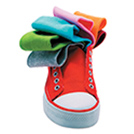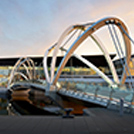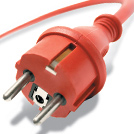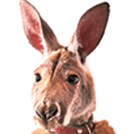|
Melbourne, Australia
 Value Added Tax
Value Added Tax
➤ VAT in Melbourne is a 10-percent Goods and Services Tax (GST), which applies to all transactions.
➤ Refunds for some taxes may be available, but companies must be registered for GST in Australia.
➤ Australia participates in the ATA Carnet program.
 Voltage
Voltage
➤ Exhibiting venues use 220-240 volts. Step-down transformers and adaptors are needed for American electrical equipment to function properly.
 Garbage
Garbage
➤ Forms for daily cleaning services are included in the exhibitor manual.
➤ Disposal fees are usually included in the fabrication costs of build-and-burn structures. Exhibit houses will reuse what they can and recycle what they cannot.
➤ The exhibit builder is responsible for disposing of any show-related waste produced during installation and dismantle (I&D).
 Cellphones
Cellphones
➤ Melbourne has an extensive 3G network. Switch to an international roaming plan before leaving the United States to ensure your phone will function properly.
 Shipping
Shipping
➤ Ocean freight from the United States takes three weeks, while airfreight takes approximately two weeks.
➤ The customs process can be lengthy due to the country's strict import/export rules, particularly regarding agricultural products.
➤ All shipping containers are fumigated at the port to kill wood-borne insects. Wrap items within the crates to keep them from taking on the noxious odor of the fumigation spray.
➤ Exhibitors are strongly encouraged to use freight forwarders when shipping exhibit-related materials to Melbourne.
 Payment
Payment
➤ Payment terms are similar to those at U.S. trade shows – a deposit or portion of payment is due up front, and the remainder of the balance is due once the job is completed.
➤ Vendors typically accept company checks, credit cards, and bank transfers as payment.
 Emergencies
Emergencies
➤ Dial 000 for any and all emergencies.
Greetings and Culture

➤ Greetings tend to be informal, so a simple "hello" and a handshake are acceptable. Physical contact during greetings is common and acceptable, including back slaps and even hugs.
➤ Avoid the use of stereotypical slang and colloquialisms such as "G'day, mate."
➤ Australians can be fairly informal, so expect to move to a first-name basis quickly.
➤ Melbourne is a friendly and casual city. Being open and personable here goes a long way.
Hospitality

➤ Most exhibits offer beverages and light snacks such as cookies and candies. Common beverages served in booths include water, juice, and soft drinks.
➤ Australia has very strict alcohol regulations, and servers must be certified. Alcohol service needs to be cleared through the venue and show organizers, and there are restrictions on the time of day it can be served on the show floor.
➤ All food and drink served on the show floor must be ordered through the venue. If you want to offer edible/consumable product samples, clear it with the venue beforehand.
➤ Breakfast and dinner meetings are common off the show floor, but Australians tend to eat later at night than people do in the United States.
Language

➤ English is Australia's official language. However, the Aussie version has its own set of unique words.
➤ All booth signage and collateral literature should be printed in English.
➤ There is no need for translators unless you are exhibiting at a Pan Asian show, in which case you may want a Mandarin translator.
Staff Attire

➤ U.S. trade show attire is generally acceptable. Like attendees at most U.S. shows, Australian attendees tend to wear causal business clothing.
➤ When considering hairstyles, piercings, and tattoos, think about what is acceptable in your industry. As in the United States, some trade shows will be more formal or informal depending on the industries that they serve.
Venues and Resources

➤ The Melbourne Convention & Exhibition Centre, located centrally in the inner-city suburb of South Wharf, is the primary exhibition venue with 323,000 square feet of exhibit space. It is easily accessible from most parts of the city thanks to a reliable public transportation system.
➤ Melbourne Showgrounds is on the northwestern side of the city and has more than a half million square feet of indoor and outdoor event space.
➤ Royal Exhibition Building (Melbourne) is a 130,000-square-foot UNESCO World Heritage site that is located on the northeast edge of what is considered the city's central business district.
➤ The Exhibition & Event Association of Australasia ( www.eeaa.com.au) is a local association that can assist exhibitors in connecting with vendors and other resources needed for exhibiting at trade shows in Melbourne.
Installation and Dismantle

➤ There are no labor unions in exhibit halls. Labor is generally sourced through a local exhibit house.
➤ An eight-hour workday is typical for I&D laborers, with a break for lunch, as well as coffee/tea breaks.
➤ Electrical order forms can be found in the exhibitor manual. Missing deadlines can result in 25- to 30-percent surcharges. You can rent an electrical distribution board from the venue, and your construction firm can bring its own wiring and cables.
➤ Drayage is not charged.
➤ Send your exhibit design to show management for approval. Multistory exhibits, and those exceeding 13 feet in height, will need approval from a structural engineer.
➤ Any fabrics you plan to use in your exhibit must be fire rated, so it is important to bring copies of all your fabric certifications.
General Facts and Tips

➤ The flight to Australia from the United States is roughly 14 hours. Minimize jet lag by boarding the airplane tired and sleeping as much as you can during the flight.
➤ The logistics of travel are relatively easy in Melbourne, but book hotel rooms well in advance, as the growing trade show market has considerably increased demand.
➤ Americans tend to assume that exhibiting in Australia is just like exhibiting back home because Australians speak English. But construction materials differ, and it is necessary to receive samples of items such as carpets and laminates in advance to ensure that they are up to the standards that you are expecting.
➤ A visa is required to enter Australia, unless you are a citizen of Australia or New Zealand.
➤ Companies do not need to pay royalties to play music in their booths, but exhibitors are advised to obtain approval from show management before the show opens.
SOURCES
Christopher Dorn, president, Idea International; Rachel Rowland, marketing and public relations manager, Glow
|








 ➤ Greetings tend to be informal, so a simple "hello" and a handshake are acceptable. Physical contact during greetings is common and acceptable, including back slaps and even hugs.
➤ Greetings tend to be informal, so a simple "hello" and a handshake are acceptable. Physical contact during greetings is common and acceptable, including back slaps and even hugs. ➤ Most exhibits offer beverages and light snacks such as cookies and candies. Common beverages served in booths include water, juice, and soft drinks.
➤ Most exhibits offer beverages and light snacks such as cookies and candies. Common beverages served in booths include water, juice, and soft drinks. ➤ English is Australia's official language. However, the Aussie version has its own set of unique words.
➤ English is Australia's official language. However, the Aussie version has its own set of unique words. ➤ U.S. trade show attire is generally acceptable. Like attendees at most U.S. shows, Australian attendees tend to wear causal business clothing.
➤ U.S. trade show attire is generally acceptable. Like attendees at most U.S. shows, Australian attendees tend to wear causal business clothing. ➤ The Melbourne Convention & Exhibition Centre, located centrally in the inner-city suburb of South Wharf, is the primary exhibition venue with 323,000 square feet of exhibit space. It is easily accessible from most parts of the city thanks to a reliable public transportation system.
➤ The Melbourne Convention & Exhibition Centre, located centrally in the inner-city suburb of South Wharf, is the primary exhibition venue with 323,000 square feet of exhibit space. It is easily accessible from most parts of the city thanks to a reliable public transportation system. ➤ There are no labor unions in exhibit halls. Labor is generally sourced through a local exhibit house.
➤ There are no labor unions in exhibit halls. Labor is generally sourced through a local exhibit house. ➤ The flight to Australia from the United States is roughly 14 hours. Minimize jet lag by boarding the airplane tired and sleeping as much as you can during the flight.
➤ The flight to Australia from the United States is roughly 14 hours. Minimize jet lag by boarding the airplane tired and sleeping as much as you can during the flight.